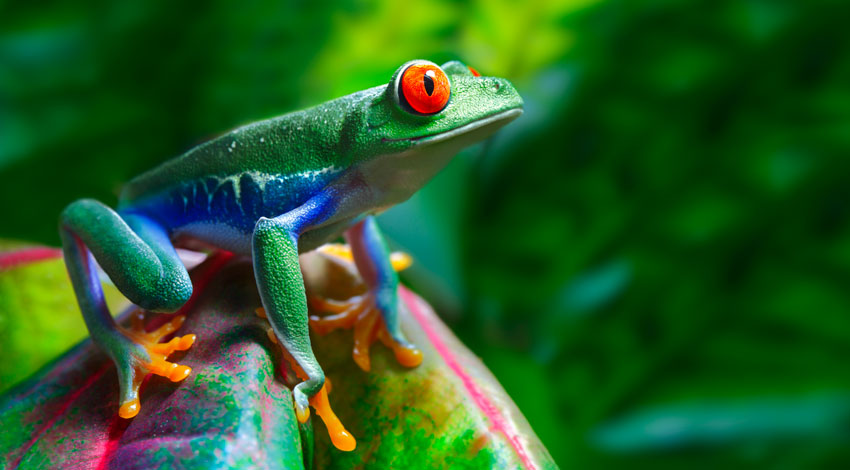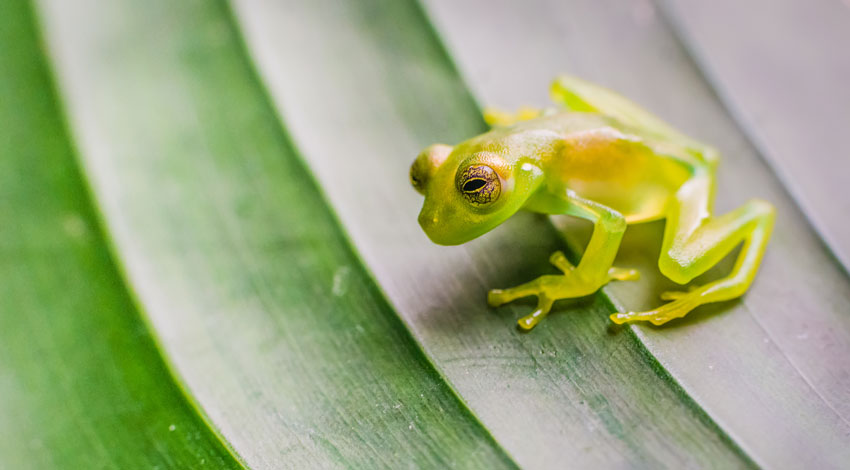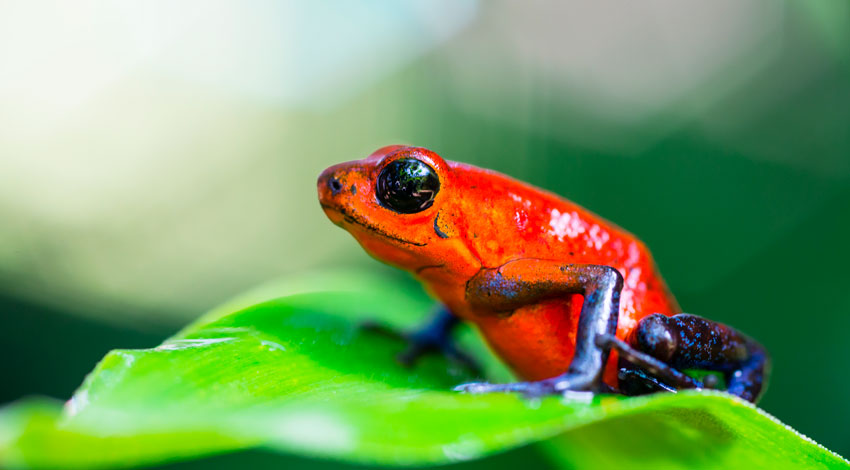Get Hoppy: Celebrate Leap Year with the Frogs of Costa Rica!
Every journey begins with a single hop.
- Kermit the Frog
Did you know that more than 200 species of frogs call Costa Rica home? Lush vegetation, plentiful water sources and ideal humidity make Costa Rica’s rainforests the quintessential frog paradise. These hoppy little amphibians thrive in the rich biodiversity found here. We couldn’t think of a better way to celebrate Leap Year than with a look at the frog species that call Costa Rica — our 2024 Campus of the Year — their home.
In varying patterns and vibrant colors, frogs use their colors to their advantage — as camouflage, to attract mates and to warn of their toxicity. They also like to use their voices or vocalizations to find love, claim territory or scream for help. Like instruments in a nocturnal orchestra, each frog brings its own hum, chirp or rhythmic croaking to the nightly recital.
Here are a few of Costa Rica’s fabulous frogs:
Red-eyed Tree Frog
One of the most iconic frogs of Costa Rica, this bright green frog flaunts captivating crimson eyes, ruby and orange feet and colorful striped sides. It is one of the brightest gems in Costa Rica’s collection of jewel-like frogs. These frogs prefer waterfront real estate — you may even see one lounging in a tree or plant above a hotel swimming pool. They especially like heliconias, bromeliads or similar palm-like plants. Their eyes may aid in their nocturnal lifestyle or be a defense mechanism called “startle coloration,” which startles predators and gives the frogs time to make their escape. Suction-cup toes come in handy for climbing trees and sticking to palms and branches.

Diane’s bare-hearted glass frog
Also called a Kermit frog due to its Muppet-like similarity, this lime-green frog with a translucent underbelly inhabits tropical wet forest in the Caribbean foothills of Costa Rica. Also nocturnal, it hunts and looks for a mate by night and hides under leaves during the daylight hours.

Strawberry Poison Frog
Sometimes referred to as the blue jeans poison frog for its blue legs, this tiny frog’s toxin-producing skin protects them from being a predator’s next hoppy meal. Active during the day, this remarkable species lays its eggs among the leaves. The newly hatched larvae are then carried on the backs of the parents to a water-filled bromeliad or puddle of water. Strawberry Poison Frogs live in rainforests as well as cacao and banana groves.

Costa Rica: Road Scholar’s Campus of the Year
If you’d like to learn more about Costa Rica’s incredible biodiversity, there’s no better way than on a Road Scholar learning adventure. Explore cloud forests and volcanoes with your family or enjoy the natural history, biodiversity and friendly attitude of Costa Rica at a slower pace. Shutterbugs will enjoy a program dedicated to digital photography. If you’re looking for frogs, the best time to spot them is following rain. Look under fallen leaves, close to a pond or other water. You can even identify the frogs you discover with the FrogID app on your smartphone. Enroll now for a “ribbiting” learning adventure and experience Pura Vida — a phrase used by Ticos (Costa Ricans) daily, meaning pure life.
